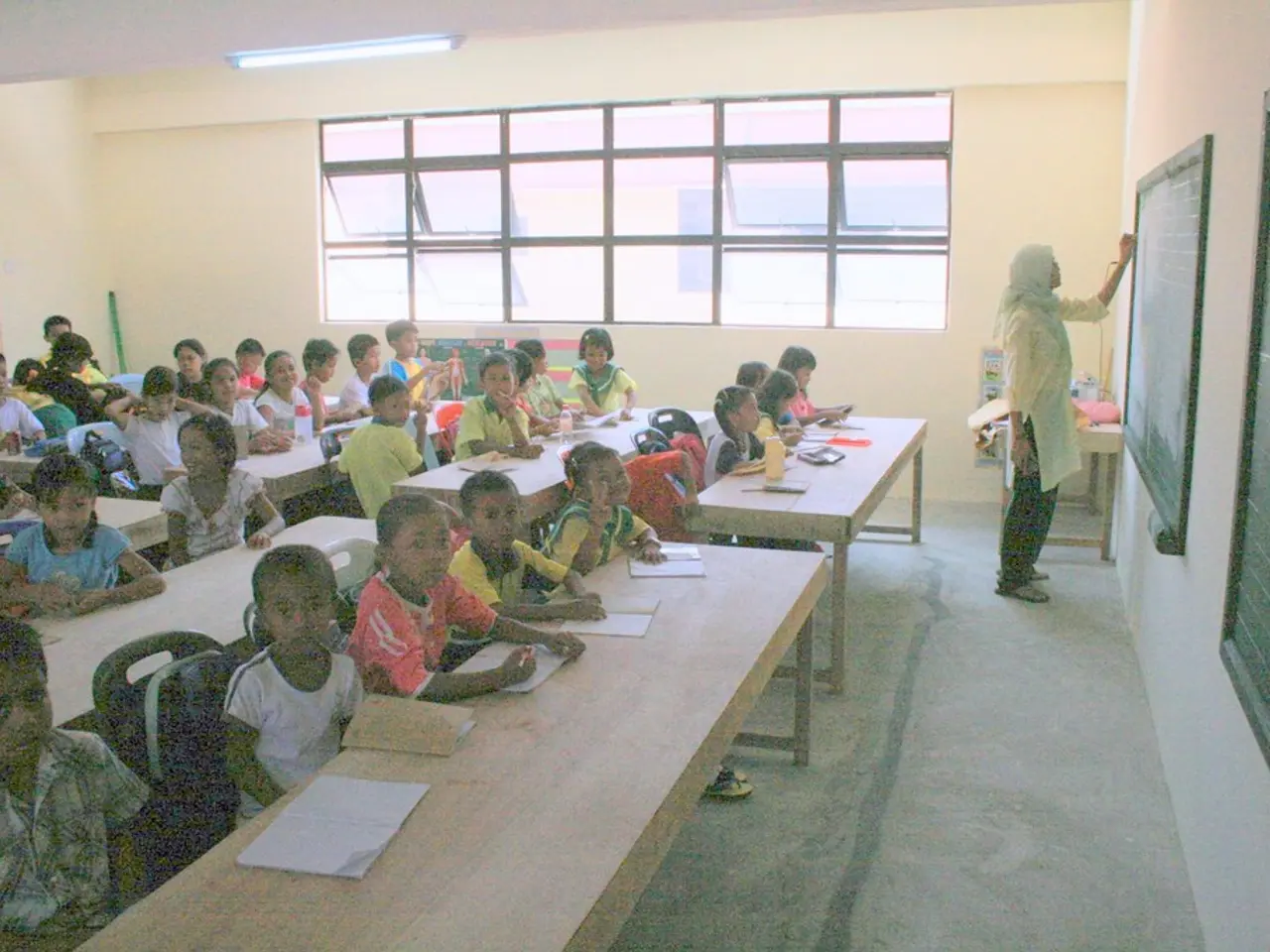Forming an AI-focused Technological Resources Panel for Implementation
=======================================================================
In a forward-thinking educational district, an AI committee was formed with a mission to explore the potential uses of Artificial Intelligence (AI) in the classroom. The committee, consisting of 35 teachers, administrators, and district leaders, took an agnostic approach, refraining from preconceived decisions about AI's use.
The committee's focus was on finding useful tools, apps, and platforms for an educational environment, with a particular emphasis on data processing and analytics, as demonstrated by the AI system Claude. The team aimed to integrate AI into existing systems, such as learning management systems (LMS), student information systems (SIS), and assessment platforms, to reduce complexity and security risks.
One of the key objectives was to enhance teacher productivity. AI can automate routine tasks, such as grading, personalized content generation, and providing real-time insights into student progress. By doing so, it helps to reduce workload and allows teachers to focus on higher-value interactions with students.
The committee also prioritized human-centered and ethical design, ensuring that AI tools complement and empower educators, not replace them. Ethical AI integration includes training teachers on responsible AI use, addressing equity, and promoting inclusion.
In addition, the committee placed a strong emphasis on professional development and training for teachers. National policy initiatives emphasize teacher training focused on AI literacy and pedagogy, which is essential for thoughtful adoption and maximizing AI’s benefits in the classroom.
The AI policy was pieced together based on research, agreed-upon additions, and existing tech and security policy. The committee tested various AI tools to understand their capabilities and drafted their own policy on AI usage in schools.
Instructional Technology Specialist Greg Reichelt, who was recognized with an Innovative Leader Award at a Tech & Learning Regional Leadership Summit, championed this initiative. Reichelt ensured that no student data was involved during the testing of AI tools. He encouraged teachers to try AI tools to help with tasks contributing to teacher burnout, such as managing emails and communications.
This approach led to a successful adoption of AI tools in the district, encouraging other educators to get involved in the process. Popular programs like ChatGPT, Google Gemini, and Claude AI were considered for their potential benefits.
By embedding AI within current systems, focusing on enhancing teacher productivity, aligning with security policies, prioritizing human-centered and ethical design, providing targeted teacher support and professional development, and adopting a proactive approach, this district is setting a strong example for the integration of AI in education while respecting existing technology infrastructure and security policies.
- In the exploration of AI's potential use in the classroom, the committee aimed to discover instructional tools, apps, and platforms for the educational environment, with a focus on learning management systems (LMS), student information systems (SIS), and assessment platforms.
- The committee wanted to integrate artificial intelligence (AI) into existing school systems to reduce complexity and security risks, while enhancing teacher productivity by automating routine tasks like grading and providing real-time insights into student progress.
- The district's AI policy, developed through research and professional collaboration, prioritizes human-centered and ethical design, ensuring that AI tools complement teachers, not replace them, and promoting (AI) literacy and responsible use among educators through professional development and training.
- By embedding AI within current systems in a methodical and ethical manner, focusing on teacher productivity, aligning with security policies, providing targeted support, and adopting a proactive approach, the district is setting an example for effective AI integration in education while respecting existing technology infrastructure and security policies.




